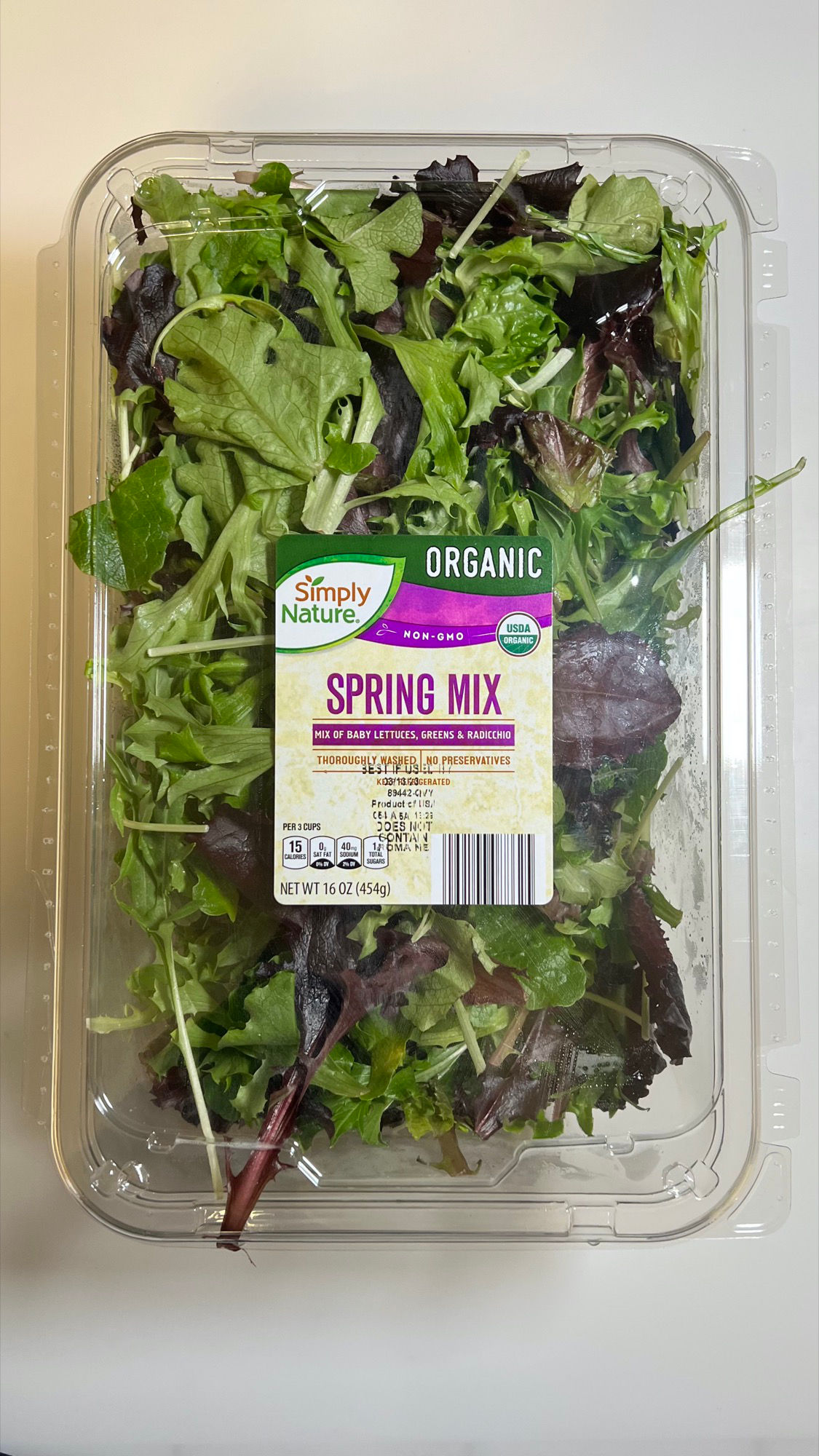Food Labels
Nutrition Facts
2 Types of Lettuce
- Light Green Iceberg etc. have practically no nutrition value however they are full of water and help fill you up. Eat them as a filler. They also add a fresh element to whatever you're eating.
- Dark Green Eat these dark leafy greens for their nutrition - the darker the better for nutrients.
Updated February 2025
Posted March 2023





Joe Dirt's 2nd Favorite
Simply Nature Organic Spring Mix

- Lettuce

HACKS
8 IMAGES
Keep Lettuce Fresh Longer
What a re-leaf
| EAT LEVEL: |
eatlife.net/recipes/keep-lettuce-fresh.php
MAIN
25 IMAGES
Low Carb Cheesewiches
Relax, Take it Cheesy
| EAT LEVEL: |
eatlife.net/recipes/cheesewiches.php
Lettuce
Lettuces have a wide range of shapes and textures, from the dense heads of the iceberg type to the notched, scalloped, frilly or ruffly leaves of leaf varieties.
- Generally grown as a hardy annual
- Lettuce is easily cultivated
- It requires relatively low temperatures to prevent it from flowering quickly.
- Lettuce is a rich source of vitamin K and vitamin A
- It is a moderate source of folate and iron
- Main use as a leafy green but sometimes for its stem and seeds
- Lettuce was first cultivated in ancient Egypt for the production of oil from its seeds.
- Selectively bred by the Egyptians into a plant grown for its edible leaves and passed to the Greeks, who in turn shared them with the Romans.
- Lettuce appears in many medieval writings
- Europe and North America originally dominated the market for lettuce, but by the late 20th century the consumption of lettuce had spread throughout the world.
- World production of lettuce and chicory was 27 million tonnes, 56 percent of which came from China.
- Lettuce was originally farmed by the ancient Egyptians, who transformed it from a plant whose seeds were used to obtain oil into an important food crop raised for its succulent leaves and oil-rich seeds.
- Lettuce spread to the Greeks and Romans
- By 50 AD, many types were described, and lettuce appeared often in medieval writings, including several herbals.
- The 16th through 18th centuries saw the development of many varieties in Europe
- By the mid-18th century, cultivars were described that can still be found in modern gardens.
LettuceThe Romans named it lactuca, from which the English lettuce is derived. The name romaine came from the variety of lettuce grown in the Roman papal gardens.
1g
NET
CARBS
CARBS
0g
ADDED
SUGARS
SUGARS
0g
TRANS
FAT
FAT
13mg
SODIUM
1% DV
0g
SAT FAT
0% DV
0mg
CHOLESTEROL
0% DV
Nutrition Facts
1 servings per container
Amount per serving
% Daily Value*
1 servings per container
Serving size
1 cup (28g)
Amount per serving
Calories
6
% Daily Value*
| Total Fat 0g | 0.00% | |
| Saturated Fat 0g | 0.00% | |
| Trans Fat 0g | ||
| Cholesterol 0mg | 0.00% | |
| Sodium 13mg | 0.57% | |
| Total Carbohydrate 1g | 0.36% | |
| Dietary Fiber 0.3g | 0.00% | |
| Total Sugars 0.3g | ||
| Includes 0g Added Sugars | 0.00% | |
| Protein 0.6g | 0.00% |
| Vitamin D 0mcg | 0.00% |
| Calcium 20mg | 1.54% |
| Iron 0.3mg | 0.00% |
| Potassium 83mg | 1.77% |
*The % Daily Value (DV) tells you how much a nutrient in a serving of food contributes to a daily diet. 2,000 calories a day is used for general nutrition advice.
SPRING MIX OF GREENS
1g
FIBER
0% DV
0g
PROTEIN
0% DV
CALCIUM
1% DV
IRON
0% DV
POTASSIUM
1% DV




